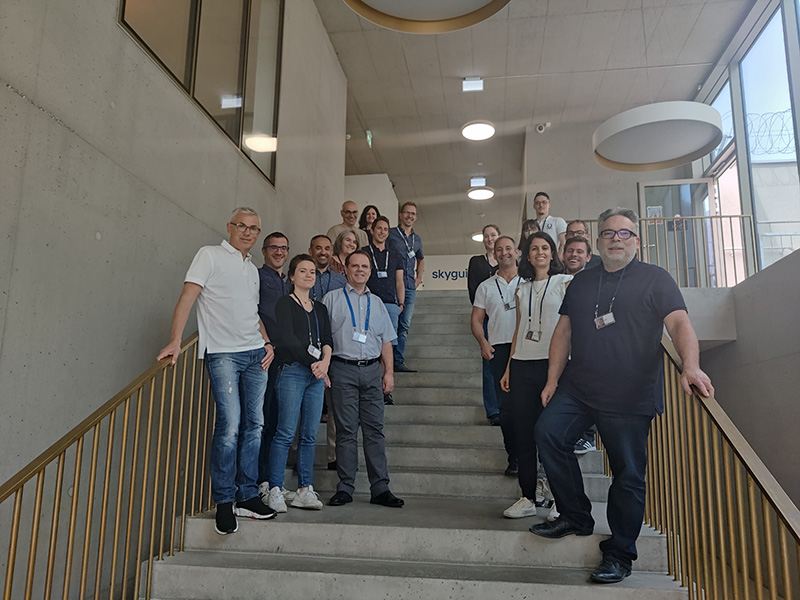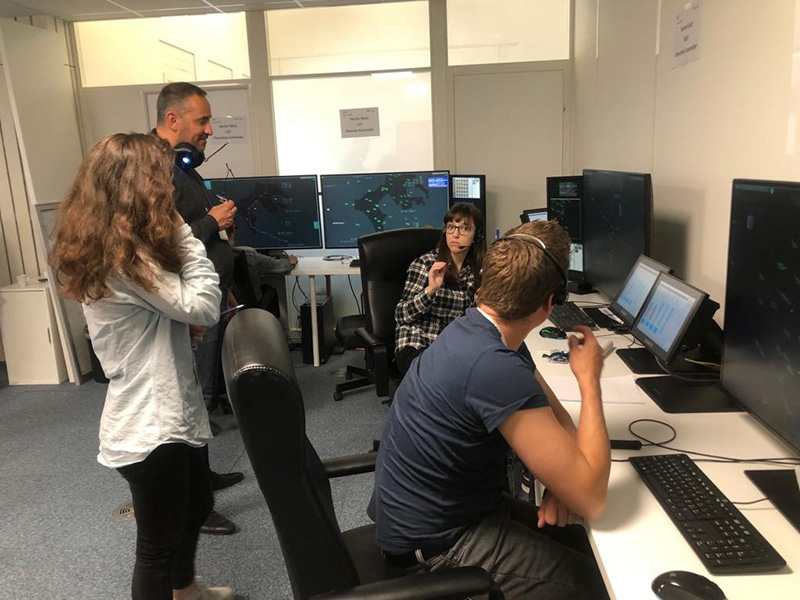Controllers participating in a recent SESAR validation campaign in Geneva have responded enthusiastically to the introduction of technology that will allow them to have a more accurate view of air traffic. Led by Skyguide and skysoft-ATM in cooperation with Airbus Defence and Space, the real-time simulations were conducted within the context of the SESAR Horizon 2020 4DSkyways project addressing trajectory-based operations (TBO).
The validation, which took place mid May, focused on the use of automatic dependent surveillance – contract (ADS-C) reports to improve ground trajectory prediction and conflicts detection and resolution tools, and the use of new controller-pilot data link communications (CPDLC) ATN-B2 messages for complex and in advance clearances.
ADS-C and extended project profile (EPP)
With ADS-C technology becoming available, aircraft have the capability to downlink and share their predicted trajectory (extended project profile, speed schedule) from the flight management system (FMS) to the ground system tools. This data is very valuable since it offers an accurate picture in real time of the aircraft’s intentions and performance (lateral & vertical profiles). The data is fed into controller support tools, allowing controllers greater situation awareness, and the ability to better detect and resolve possible trajectory conflicts.
CPDLC ATN-B2 messages
Controller-pilot data link communications, CPDLC, allow for a fast exchange of text messages via data link between air traffic controllers and pilots. The advantages to this form of communication over traditional voice communications are manifold: it reduces the risk of misunderstandings and allows controllers to deal with requests simultaneously. The new CPDLC standard ATS-B2 coupled with the capability of autoload function in the FMS allows for the transmission complex and in advance clearances to the flight crew. This permits in particular to use points with latitudinal and longitudinal coordinates in designing trajectories, which facilitate optimum trajectories, therefore flight efficiency.
Advanced automation
CPDLC and ADS-C open up the possibility on increasing the automation of the air traffic management system. In this respect, SESAR partners have developed automation tools, such as trajectory visualisation on the human-machine interface, electronic coordination (inter-centre/inter-sector trajectory negotiation), graphical trajectory design tools, systems proposals, automated CPDLC message generation, monitoring aids (e.g. discrepancy detection and solving, conformance monitoring), conflicts detection and resolution tools.
Objectives of the validation campaign
The objectives of the validation exercises were:
- To assess the use of the ADS-C EPP data associated to CPDLC ATS-B2 capabilities to enrich ground trajectory prediction and therefore conflicts detection and resolution tools. Also, to test new functionalities and automation linked to complex clearances transmitted by datalink.
- To optimise air traffic control performance and task-sharing between executive and planning controllers thanks to better anticipation and advance clearances capabilities.
Preliminary feedback
The preliminary results gained from the questionnaires and discussions among participants suggest that controllers found the use of downlinked ADS-C EPP in the ground system and the CPDLC ATN-B2 capabilities bring a lot of benefit in managing traffic, better anticipation thanks to improved trajectory prediction, inter-centre electronic coordination and clearances in advance. This also allows a better distribution of tasks between Executive and Planning Controllers. Controllers were very enthusiastic about the foreseen benefits of these new technologies.
Next steps?
All data recorded during the validation exercises and gathered in the questionnaires and debriefing sessions are now processed to feed the PJ.18-53B and PJ.18-56 Validation reports. Some outcomes from the validation will be further taken into account in SESAR 3 TBO projects.
About the validation exercise environment and platform
The operational environment used for the validation exercise is the skyguide upper airspace (Zurich & Geneva air traffic control centres (ACCs)) and adjacent ACCs airspaces. Several controllers from both ACCs participated in the simulation, which comprised 15 runs of one hour allowing to test different traffic configurations and traffic levels.
For the purpose of the validation, in order to obtain reliable results in a simulation environment, the skyguide platform (skytics) was developed, based on the most advanced version of skyguide operational ATC system (skyvisu, skyserver) and Genetics simulator developed by Airbus Defence and Space which provides realistic aircraft behaviour and computes trajectories similar to the trajectories provided by the aircraft FMS. All new functions related to TBO (trajectory management, ADS-C, CPDLC ATS-B2) have been integrated and validated.


This project has received funding from the SESAR3 Joint Undertaking under the European Union’s Horizon 2020 research and innovation programme under grant agreement No 8723
